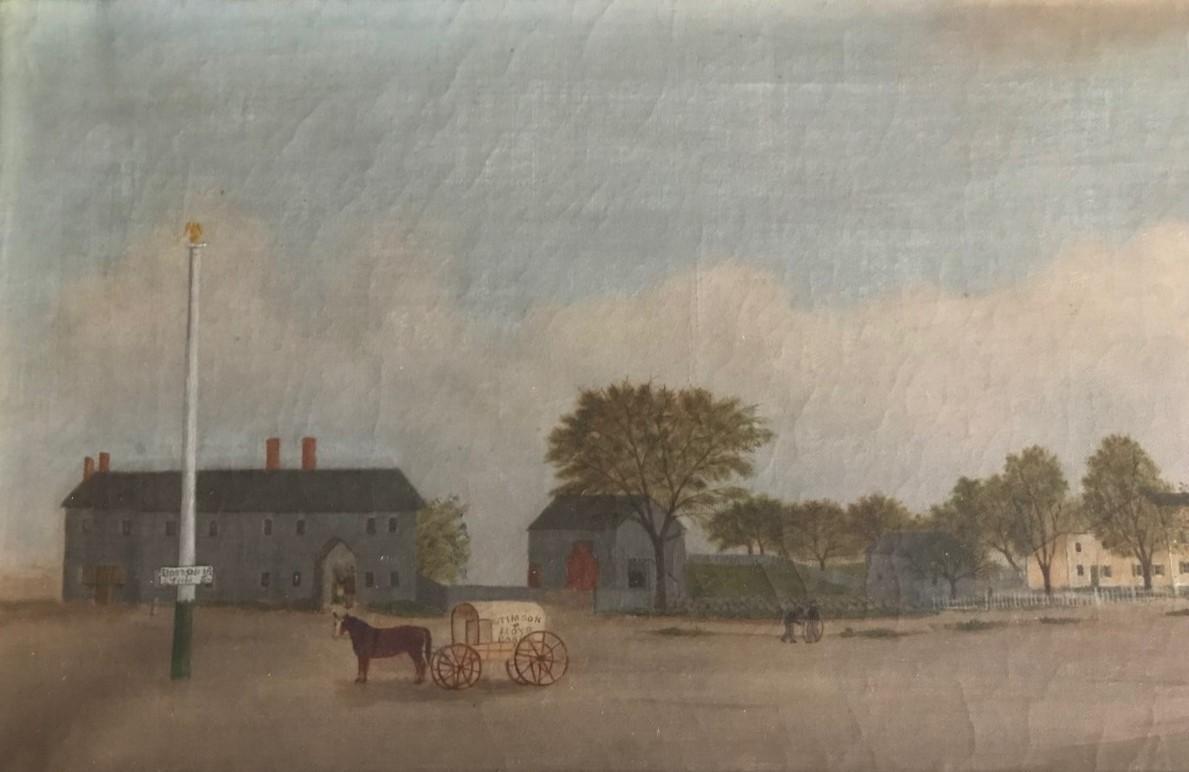Due to continued concerns over COVID-19, there will be no in-person commemoration of Patriot’s Day. However, we will devote April’s Postcards of Peabody’s Past to virtually recognize the sacrifices made that day.

From the Collection of the Peabody Historical Society & Museum
At 9AM on April 19, 1775, word came to Peabody that the British soldiers were marching toward Lexington and Concord. In preparation, the local minutemen had designated the corner of Main and Washington Streets as their meeting location. At that time, the local tavern, Bell Tavern was located at that corner.

By 10AM, the minutemen had started their march towards Lexington. After 4 hours and 16 miles, they reached the village of Menotomy (the city of Arlington today). This map shows the distance between Danvers the and Jason Russell’s House. We have added the yellow highlights for clarity.
The British troops were retreating from Lexington, and it was in Menotomy along Concord Road (now Massachusetts Avenue) that the minutemen encountered them. In these companies, there were over 300 men from Peabody, Danvers and Beverly. The minutemen took strategic cover, some behind walls and trees. They started to shoot at the retreating British troops. Unbeknownst to them, the British soldiers had flanked them. What followed was intense, close range fighting. A few of the Peabody soldiers took cover in the nearby home of Jason Russell (now the Arlington Historical Society). Some were pursued by British troops and killed.

From the Collections of the Peabody Historical Society and Museum
George Southwick was reluctant to join the minutemen that day, as his wife was close to giving birth. However, he could not find a replacement. George Southwick, Dennison Wallis and Joseph Bell found shelter in Jason Russell’s house. When it appeared the British soldiers had moved on, Southwick, Wallis and Bell emerged. However, they were surprised by British soldiers, and Southwick was struck in the head by an enemy sword. Wallis was shot multiple times, but miraculously survived by pretending to be dead. Bell was taken captive by the British and imprisoned two months on an English frigate. George Southwick, Samuel Cook, Henry Jacobs, Ebenezer Goldthwaite, and Benjamin Daland died in Arlington and resided in what it is today Peabody. Jotham Webb and Perley Putnam were also killed and lived in what it is today Danvers. At the time of their deaths, the men were all young, with much life before them. Samuel Cook was 33. George Southwick and Benjamin Daland were 25. Henry Jacobs, Ebenezer Goldthwaite and Jotham Webb were 22. Perley Putnam, the youngest, was 21.
The deceased were transported back to Peabody and Danvers via ox-cart. Samuel Cook, George Southwick, Henry Jacobs and Ebenezer Goldthwaite were taken to the home of Samuel Cook, 65 Central Street, to be waked. The funeral services took place in the South Congregational Church. George Southwick, Samuel Cook, Benjamin Daland and Ebenezer Goldthwaite were buried at the Old South Burial Ground on Main Street, near today’s border with Salem. Henry Jacobs was buried at his family’s cemetery in West Peabody.
Reference Material: John A. Wells, The Peabody Story, Essex Institute, 1972, Pages 212-231.
